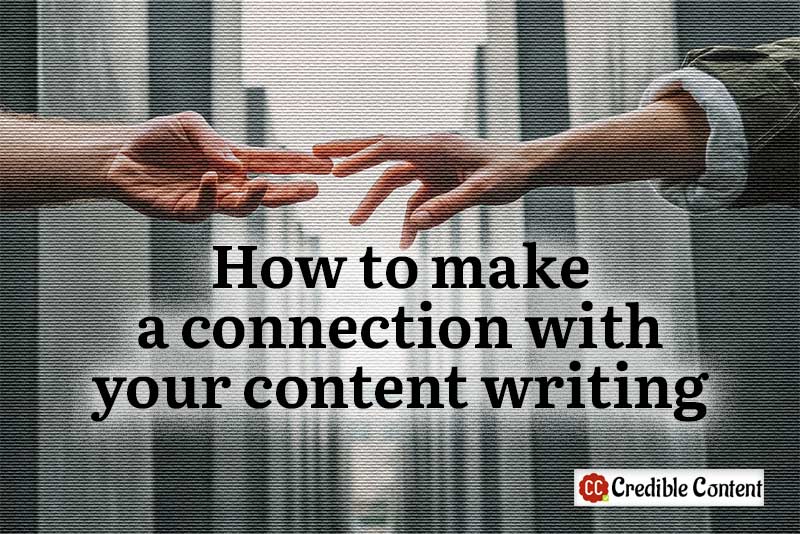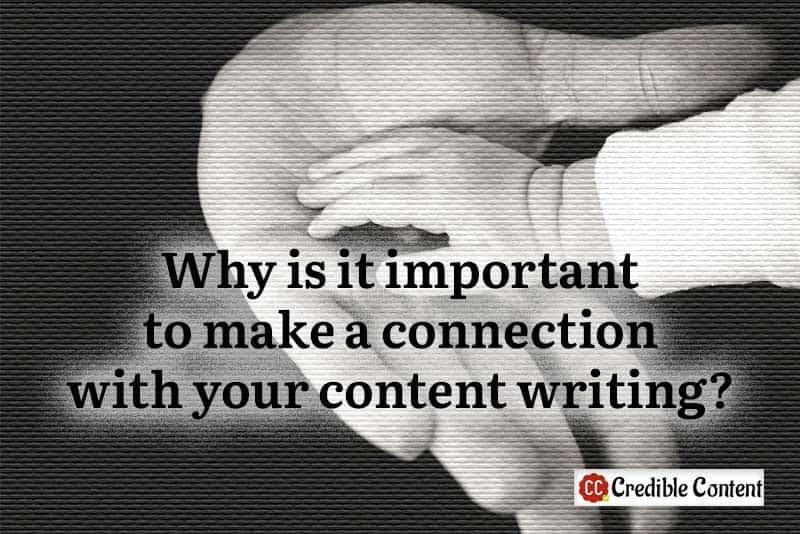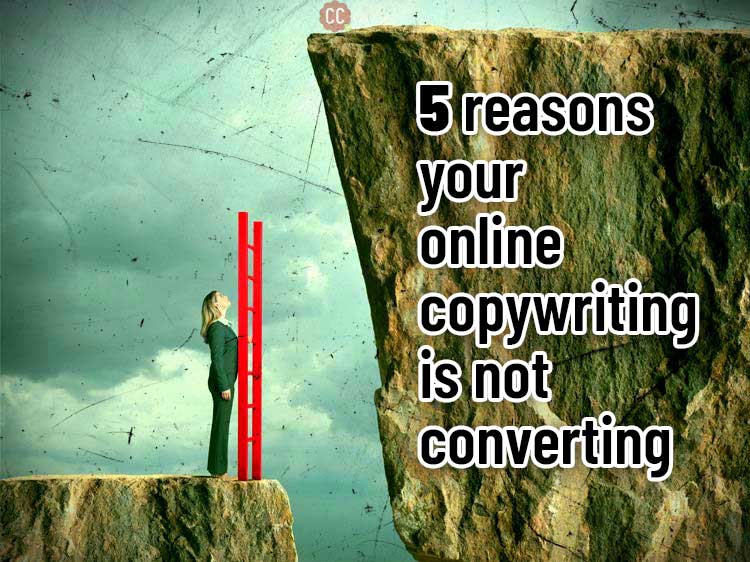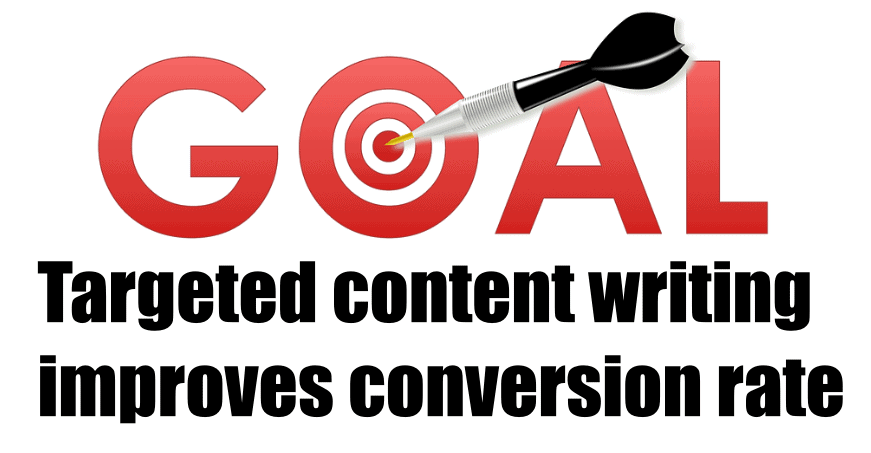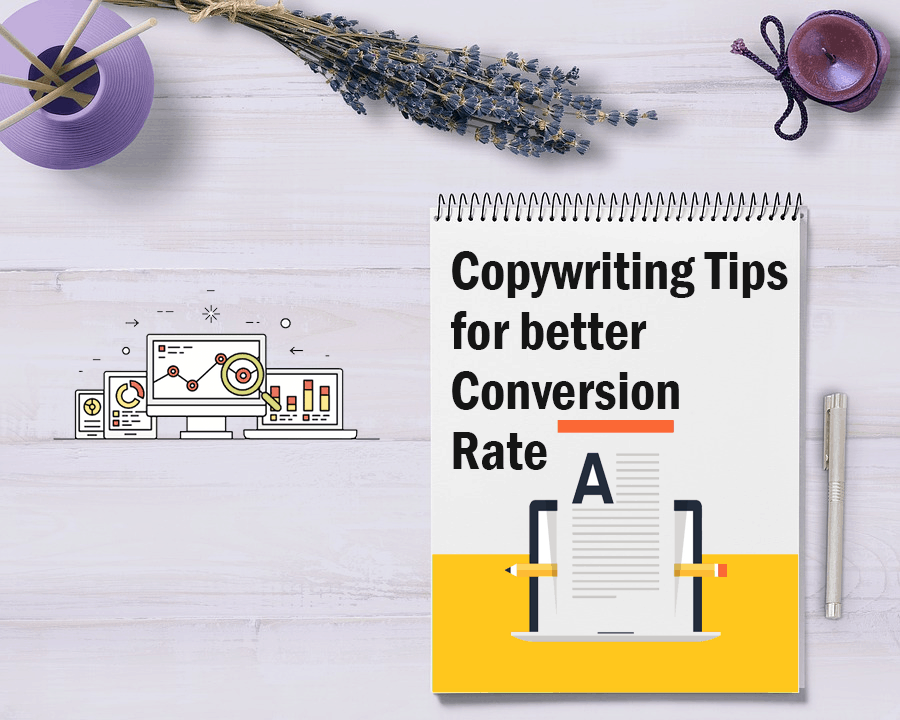
Copywriting tips for better conversion rate
In this blog post you will read a few copywriting tips that will help you boost your website conversion rate.
Although I constantly promote myself as a website content writer, when I’m writing for a business website, especially the main pages like the homepage, the services page, the product features page or the about us section, I’m doing copywriting.
Content writing is educational and informative, copywriting is promotional and persuasive.
A long time back I published a web page explaining the difference between copywriting and content writing.
Content writing doesn’t always have to sell, but copywriting is all about selling and hence, conversion rate is very important when it comes to copywriting.
Aside from your main business website content, copywriting is also used for
- Landing pages
- Email marketing
- PPC campaigns
- Social media advertising
- Brochures and flyers
- Promotional video and audio scripts
When you hire a professional copywriter, you want to boost your website conversion rate. You want more people to buy from you or use your services or download your software or e-book or mobile app.
Basically, you want them to click the “call to action” link or button.
How do you make people do that?
This is where my copywriting tips can help you. Even if you yourself don’t want to use these tips, you will be able to glimpse them in the writings of your copywriter and you will feel empowered and involved.
There is nothing magical about copywriting. It is simply convincing and engaging writing, written in a manner that your target audience is impressed by your message and agrees to take the action you want it to take.
Here are 10 copywriting tips that will boost your website conversion rate.
Copywriting tip 1: Have a clear idea of what your audience is looking for
This is one of the most important copywriting tips and without knowing what your audience is looking for, you cannot improve your conversion rate.
Conversion happens when you are providing exactly what your prospective customers and clients are looking for.
Whether they want to update themselves regularly, or educate themselves about a certain product or service or want to make up their minds, you need to create your copy accordingly, and only then your conversion rate improves.
Good copywriting also involves using the language that your audience uses. If your language is totally alien, they don’t understand what you are saying and they leave your webpage or landing page, frustrated and confused.
So,
- Write about what your audience is looking for.
- Write in the language your audience uses.
Having a persona also helps you understand the expectations of your visitors. You cannot please everyone. So, decide in advance whom you’re going to please. Define a persona. A persona has
- The gender of your target person.
- His or her age.
- His or her social status.
- His or her job title and industry.
- Marital status.
- Location.
- Whether he or she has kids are not.
These are general traits.
If you are writing copy for a fashion accessory, then it will help you to know the fashion preferences of your persona.
Copywriting tip 2: Use conversational language
Stiff, official-sounding language doesn’t sell well. Use a conversational style when copywriting. Preferably, use first person. Use lots of “you” and “your”.
Talk like a person. Talk as if the other person is sitting in front of you and you are convincing him or her to do something. Use imaginary body language because it reflects through your copy and make sure copy sound natural. You can also imagine a scene from a movie where two characters are talking to each other.
Copywriting tip 3: Come to the point, don’t beat around the bush
Tell straight up what you have to offer.
If you are offering an SEO package, tell the person immediately how you’re going to improve his or her search engine rankings.
Mention the problem, then mention the solution.
Life is full of distractions these days. Even small things can distract people away from your landing page or website.
Hence, deliver your important message as early in the copy as possible.
Copywriting tip 4: Respond to common objections in advance
Frankly, there can be thousands of objections your target audience may have and hence, it is important to define a persona, as described above, and then stick to that persona. This way, you will know the common objections the person may have when going through your copy.
For my target audience, for example, I’m not looking for people who are more interested in getting cheap copywriting services and less interested in improving their conversion rate.
Although cost matters, I’m targeting people for whom cost is not the deciding factor but how well my copy converts.
So, people belonging to my target segment may have a question like, “But, is your copywriting service really effective and will it help me improve my website conversion rate?”
I need to convince them. I need to provide proof. I need to provide testimonials. Through the copy, I need to convince them that I’m the copywriter they are looking for.
Copywriting tip 5: Use numbers instead of claims
“I can double your conversion rate in 8 weeks” is far convincing than “I can improve your conversion rate fast”.
“My clients have experienced 300% improvement in their conversion rate after using my copywriting services for 5 months” is better than “Improve your conversion rate with my copywriting services”.
Numbers give your target audience a clear idea. Whether you are mentioning a price of a product or service or the amount of improvement it can bring in, use numbers to give them a clear idea of what they will get.
Copywriting tip 6: Use shorter, crisper sentences
Shorter sentences are easier to read and easier to understand. They focus on a single thought and that’s it. After being exposed to that single thought, the person can move on.
“A $105 flat fee, no hidden cost.”
“Buy it once, you don’t have to buy it again.”
Life these days is full of distractions. People don’t get distracted when they read short sentences. Short sentences are also powerful and make a big impact.
Most powerful statements have fewer words. Take for example what Mahatma Gandhi said, “Be the change you want to see in the world.” – simple, to the point, says what it means to say.
Copywriting tip 7: Hit the emotional chords
By the end of the day, selling is emotional. We buy less for utility value, more for emotions. As the insane success of the iPhone tells you, people buy for experience and not just for the utility value (provided, they can afford).
This Harvard Business School research says that 95% of purchase decisions are made in the subconscious mind.
You can hit the emotional chords many ways.
Take for example, “Join the elite club of billionaires who make millions every month using these copywriting tips.”
Although, the line talks about making money, it reaches out to people who would like to join the elite club of billionaires.
Another one, “Never worry about putting food on the table – the sure shot way of making money.”
Everybody wants to make money, but, the need to put food on the table can move anyone.
“Make your ex regret the moment he decided to leave you,” can be a great weight loss slogan if making your ex feel bad is more important than being fit.
Emotions are great motivators.
Copywriting tip 8: Sell the benefits, not the product
What is the benefit of good copywriting? It gets you more customers and clients. So, what is the benefit? Getting more customers and clients.
People don’t want to buy your product or subscribe to your service just because you are providing it.
Something is troubling them. Something is missing in their lives. Something is holding them back from achieving their best. Something doesn’t let them sleep.
Take for example a to-do list.
“This is one to-do list that never lets you miss the important things you need to do.”
“The mobile phone app that lets you get your life back on track.”
Nifty features are great to have, and they certainly help people, and this is why you have incorporated them in the first place, but people aren’t really bothered about them unless they have started using your mobile app.
What is the greatest, irresistible benefit of downloading and installing your app? Begin your copy with that.
Copywriting tip 9: Never underestimate the importance of a headline
Headline is what that catches your fancy.
When you come across a headline on Facebook or Twitter, how it beckons you decides whether you are going to click it or not. This is the power of headlines.
A headline is bigger. It attracts the attention of your visitors immediately because the headline is not just bigger, it is also at the top. The size and place says, “Look at me before you look at something else.”

Most people will stay or leave your landing page based on what you have written in your headline.
If you want to make a promise, if you want to highlight the most important benefit of your product, if you want to deliver the most hard-hitting USP, use it in your headline.
Copywriting tip 10: Become your reader’s advocate
Become your customer’s or client’s advocate through your copy.
Although deep within you want them to spend money on your business, basically, what you have is their good in your heart.
Your product or service has the ability to transform their lives.
Your product or service can herald a positive change.
Your prospective customer or client has a problem, and you have got the right solution.
You have totally understood his or her problem and now you want to offer a solution.
Throughout your copy, you fight for the benefit of your customers and clients. This is how you write effective copy.
Conclusion
There is no hard and fast rule in copywriting: you just need to put the interest of your customers and clients first before your own. You need to connect. You need to tell them a story they can relate to. You talk in their language. You become one of them.

